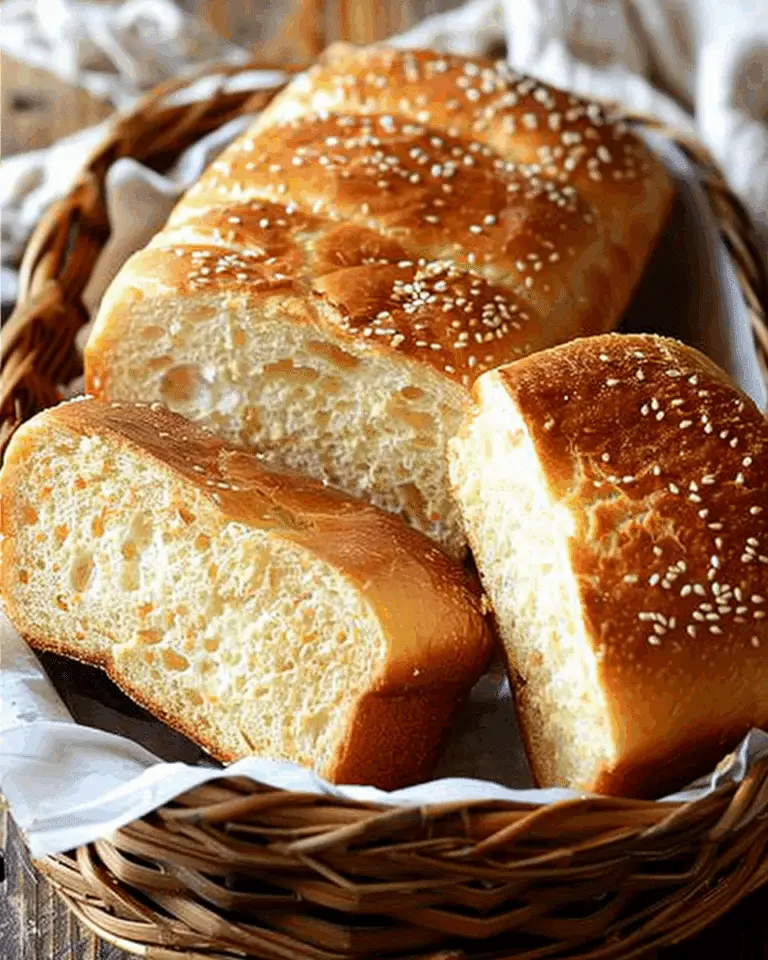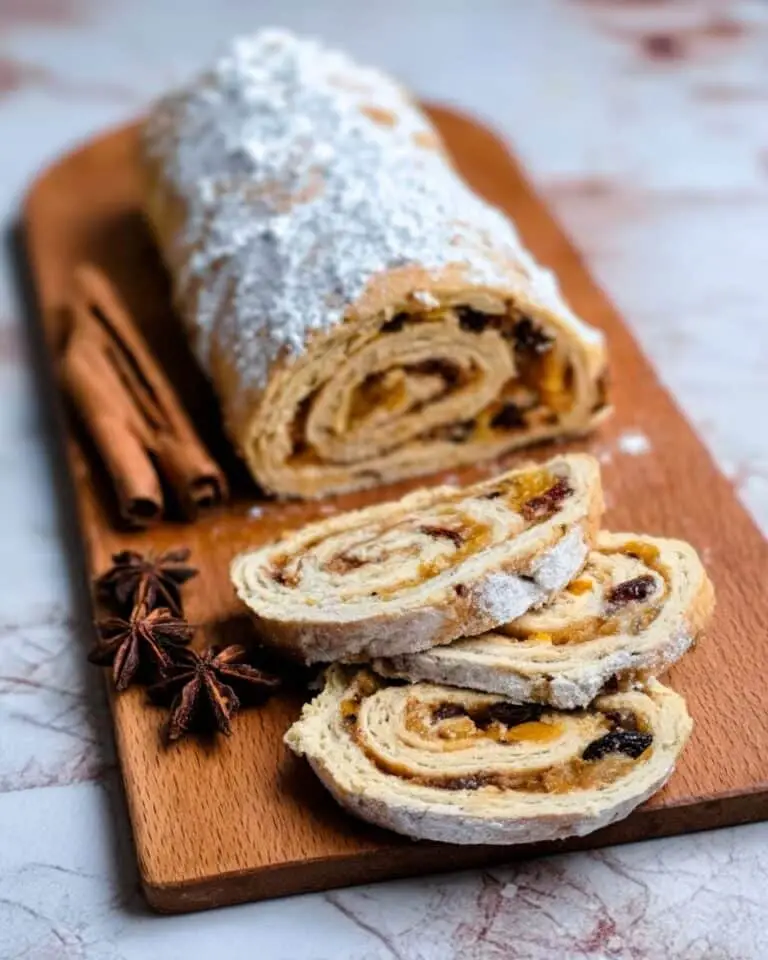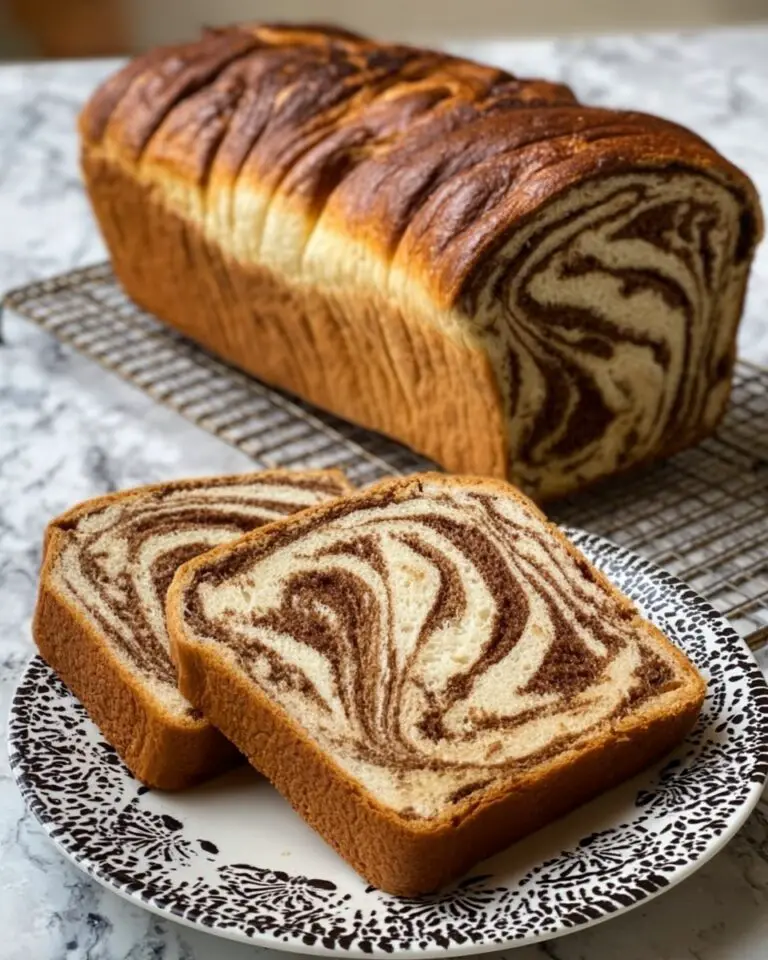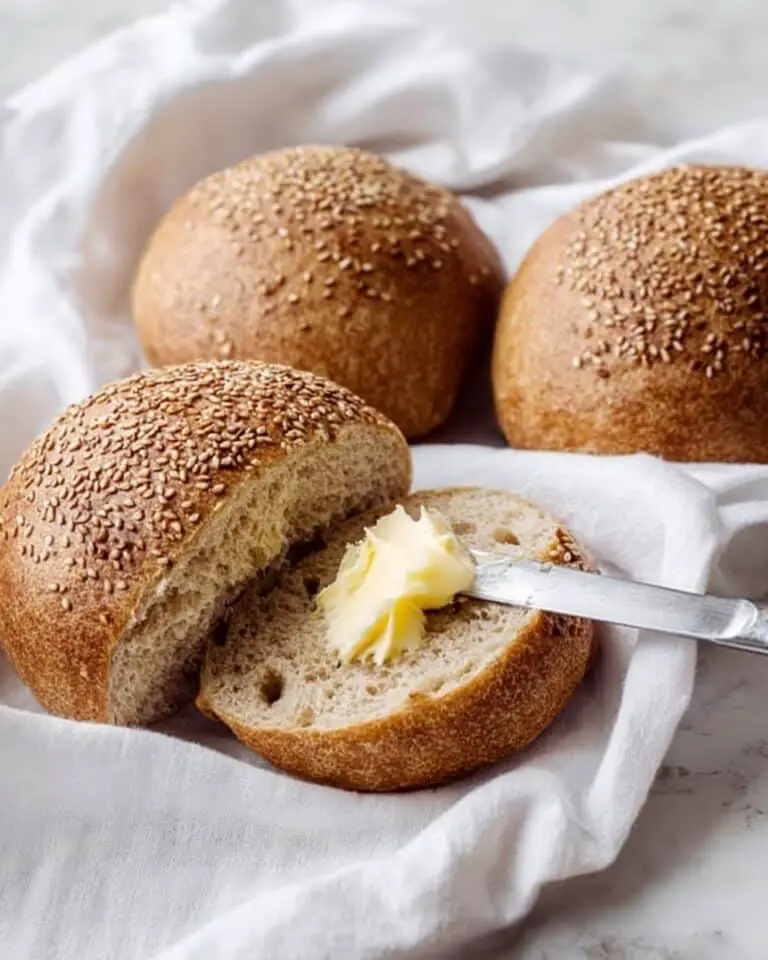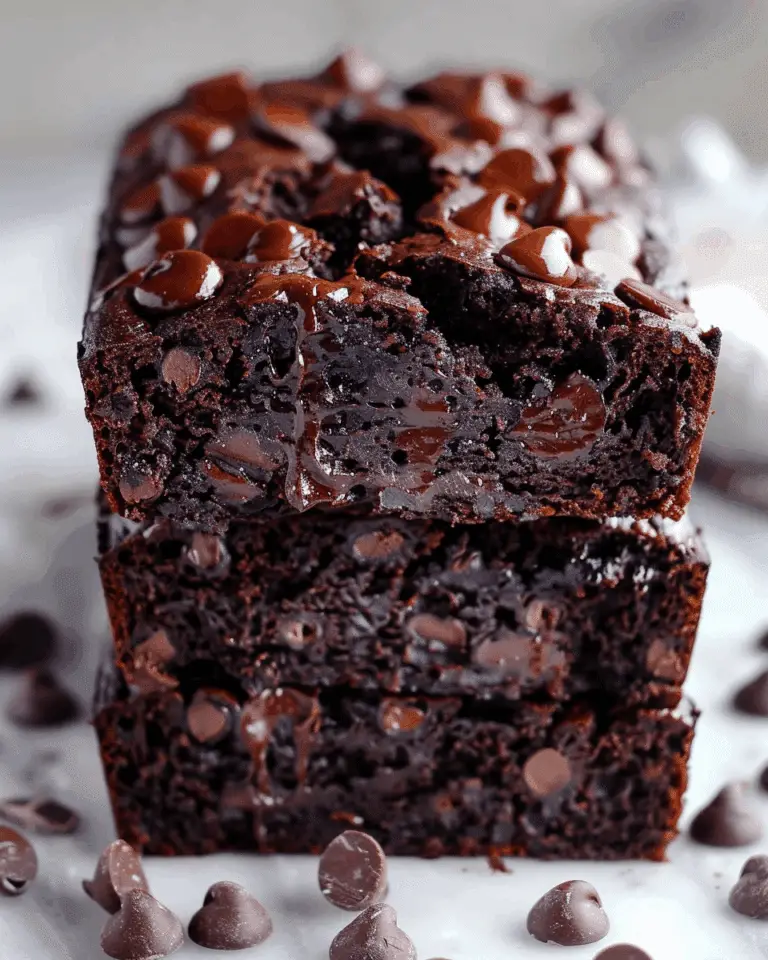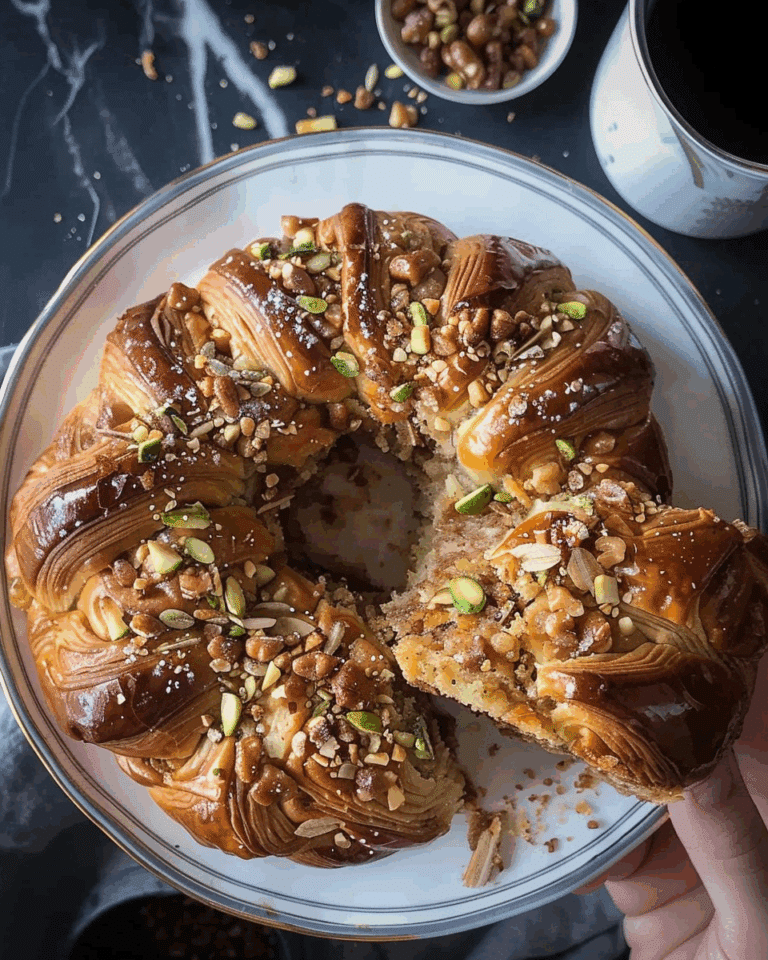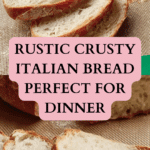If you’ve ever wished for a loaf that brings a bit of an Italian bakery right to your kitchen, this Crusty Italian Bread will completely win your heart. With its rustic, golden crust and tender, chewy middle, it’s a showstopper whether served steaming hot alongside your favorite pasta or enjoyed all on its own. There’s nothing quite as comforting as the aroma of fresh bread filling your home, and once you try this recipe, you’ll keep returning to it whenever you want a classic, crowd-pleasing loaf.
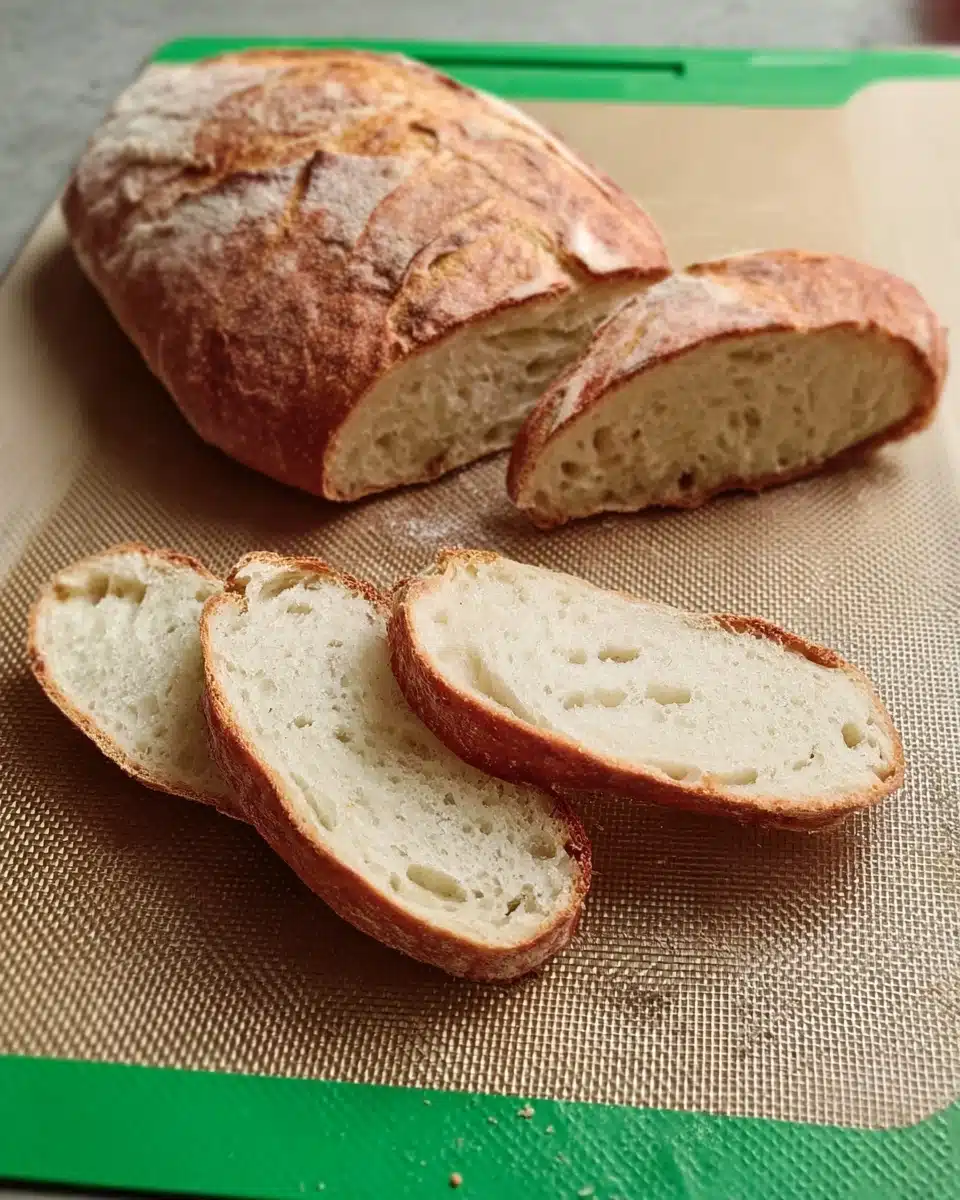
Ingredients You’ll Need
Don’t let the short ingredient list fool you: every component in this Crusty Italian Bread matters. Each one plays a special role in building a loaf that’s both beautiful and delicious, from the color of the crust to the springy crumb inside.
- All-purpose flour: The backbone of the bread, providing just the right amount of gluten for a chewy, satisfying texture.
- Sugar: Feeds the yeast and gives the bread its subtle golden color and irresistible aroma.
- Salt: Brings out the flavors and balances the dough. Don’t skip it—salt makes everything taste like itself!
- Olive oil: Adds silkiness and a hint of richness, contributing to the bread’s tender crumb and extra flavor.
- Active dry yeast: This is your bread’s lifeblood, helping it to rise high and develop those characteristic airy pockets.
- Warm water (110 °F / 43 °C): The perfect temperature to wake up the yeast, bringing your dough to life.
How to Make Crusty Italian Bread
Step 1: Activate the Yeast
In a large bowl, combine the warm water, sugar, and active dry yeast. Give it a quick stir, and then let it stand for about five minutes. You’ll soon see a creamy, foamy layer form on the surface, which means your yeast is alive and ready to do its magic.
Step 2: Mix and Knead the Dough
Add the flour, salt, and olive oil to your yeast mixture. Stir until a shaggy dough forms, then turn it out onto a lightly floured surface. Knead for 8–10 minutes until the dough becomes smooth, elastic, and slightly tacky (but not sticky). This kneading process is what develops the gluten, ensuring your Crusty Italian Bread gets that perfect chewy bite.
Step 3: First Rise
Drizzle a bit of olive oil in a large bowl and place your dough inside, turning once to coat it all over. Cover the bowl with a damp towel or plastic wrap and let it rise in a warm spot for about an hour. By the end, your dough should be noticeably puffy and almost doubled in size—pure anticipation!
Step 4: Shape and Rest the Loaf
Gently punch down the risen dough to release some of the air. Shape it into a rustic oval or round loaf, depending on your mood. Place your shaped dough on a parchment-lined baking sheet and let it rest uncovered for another 20 minutes. This little rest lets the gluten relax and gives your loaf its final shape.
Step 5: Bake to Perfection
Preheat your oven to 400 °F (200 °C). For extra shine, brush the top of your loaf with olive oil before baking. Slide your pan into the oven—if you want that signature crackly crust, pop a small pan of water onto the lower oven rack to create steam. Bake for 25–30 minutes, until your Crusty Italian Bread is brilliantly golden and echoes with a sharp, hollow sound when tapped on the bottom.
How to Serve Crusty Italian Bread
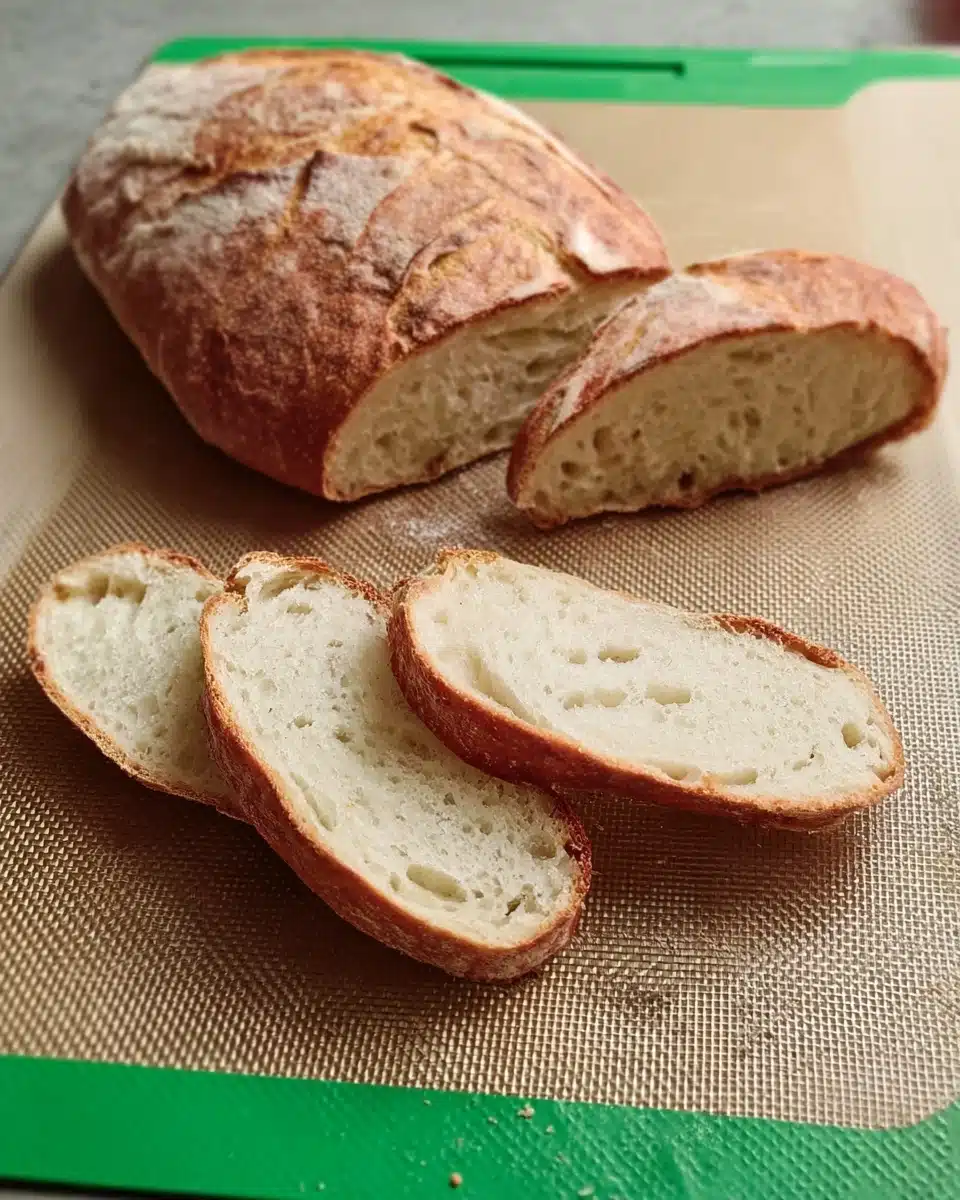
Garnishes
While Crusty Italian Bread shines on its own, you can make each slice even more irresistible by brushing the top with melted butter or olive oil as soon as it comes out of the oven. A sprinkle of flaky sea salt or freshly cracked black pepper adds a finishing touch, and for a herby flair, try dusting the warm loaf with chopped fresh rosemary or thyme.
Side Dishes
This bread is the ultimate sidekick to any Italian meal—think steaming bowls of minestrone, creamy risottos, or a big plate of pasta with robust tomato sauce. It’s also a champion at brunch, perfect for mopping up runny eggs or as the base for an epic open-faced sandwich.
Creative Ways to Present
Crusty Italian Bread loves making a statement on your table! Tear it by hand for a rustic look at a casual dinner, slice it thinly and toast for homemade crostini, or hollow out the center and stuff with a cheesy dip for the best kind of party centerpiece.
Make Ahead and Storage
Storing Leftovers
If you have any leftover Crusty Italian Bread, simply wrap it in a clean kitchen towel or paper bag to help preserve its crust. Store at room temperature for up to two days, avoiding plastic bags, as they tend to soften the hearty crust.
Freezing
This bread freezes beautifully! Once completely cooled, wrap the loaf tightly in foil or plastic wrap and place in a freezer bag. It will keep its freshness for up to three months. For best results, slice before freezing so you can grab a piece or two whenever you need it.
Reheating
To revive your Crusty Italian Bread, preheat your oven to 350 °F (175 °C). Splash a few drops of water on the crust and bake the loaf (or slices) directly on the oven rack for about 10 minutes. This quick heat will bring back that lovely crispiness as if it were freshly baked.
FAQs
Can I use bread flour instead of all-purpose flour?
Absolutely! Using bread flour will make your Crusty Italian Bread even chewier and slightly more airy, thanks to the extra protein content. It’s a great choice if you like a little more structure to your loaf.
What if my dough doesn’t rise?
If the dough stays flat, your yeast might have been old or the water temperature could have been too hot (or too cold). Always check that your yeast is bubbly in step one. And remember, a warm, draft-free place works wonders for that first rise!
Can I add herbs or cheese to the dough?
Definitely! Chopped fresh herbs (like rosemary or basil) and grated cheeses (like parmesan) make fantastic add-ins. Just mix them in with your dry ingredients for a personalized twist on classic Crusty Italian Bread.
How do I get an extra crispy crust?
Baking with steam is the trick! Placing a small pan of water in the oven while your Crusty Italian Bread bakes helps create a crackly, bakery-style exterior. You can also spritz the oven walls with water just after placing the loaf inside for more steam.
Why is my loaf pale in color?
If your bread isn’t turning that deep, caramel golden, check your oven temperature first. Also, brushing the shaped loaf with a bit of olive oil before baking encourages a richer color and shinier finish.
Final Thoughts
There’s something truly special about pulling a fresh-baked Crusty Italian Bread from your oven—it’s not just about the taste, but the entire joyful process. Give it a go, and soon you’ll have a new favorite loaf to share with friends and family, no matter the occasion!
Print
Crusty Italian Bread Recipe
- Total Time: 2 hr 5 min
- Yield: 1 loaf
- Diet: Vegetarian
Description
A rustic, golden-brown loaf with a crisp crust and soft, chewy interior — perfect for dipping, sandwiches, or pasta night.
Ingredients
Dough:
- 3 ½ cups all-purpose flour
- 1 tbsp sugar
- 2 tsp salt
- 1 tbsp olive oil
- 1 packet (2 ¼ tsp) active dry yeast
- 1 ¼ cups warm water (110 °F / 43 °C)
Instructions
- Dissolve yeast and sugar: In warm water; let stand 5 minutes until foamy.
- Stir in flour, salt, and oil: Knead 8–10 minutes until smooth.
- Let rise: Place in oiled bowl; cover and let rise 1 hour.
- Shape and rest: Shape into loaf; rest 20 minutes.
- Bake: At 400 °F (200 °C) for 25–30 minutes until golden and crusty.
Notes
- Brush with olive oil before baking for extra shine.
- For a crisp crust, place a small pan of water in the oven for steam.
- Prep Time: 15 min
- Cook Time: 30 min
- Category: Bread
- Method: Baking
- Cuisine: Italian
Nutrition
- Serving Size: 1 slice (44g)
- Calories: 120
- Sugar: 1g
- Sodium: 240mg
- Fat: 1.5g
- Saturated Fat: 0g
- Unsaturated Fat: 1g
- Trans Fat: 0g
- Carbohydrates: 23g
- Fiber: 1g
- Protein: 3g
- Cholesterol: 0mg

